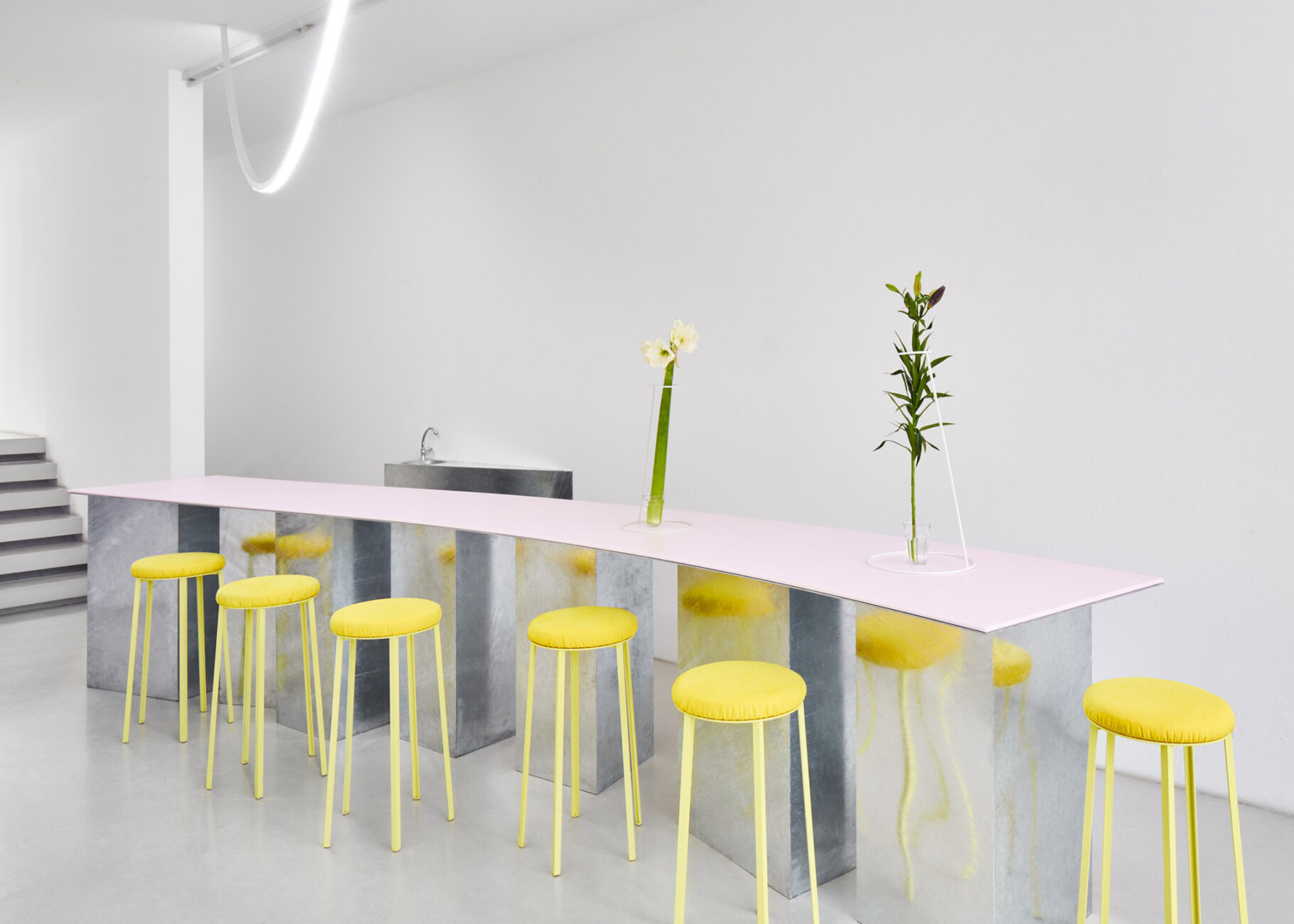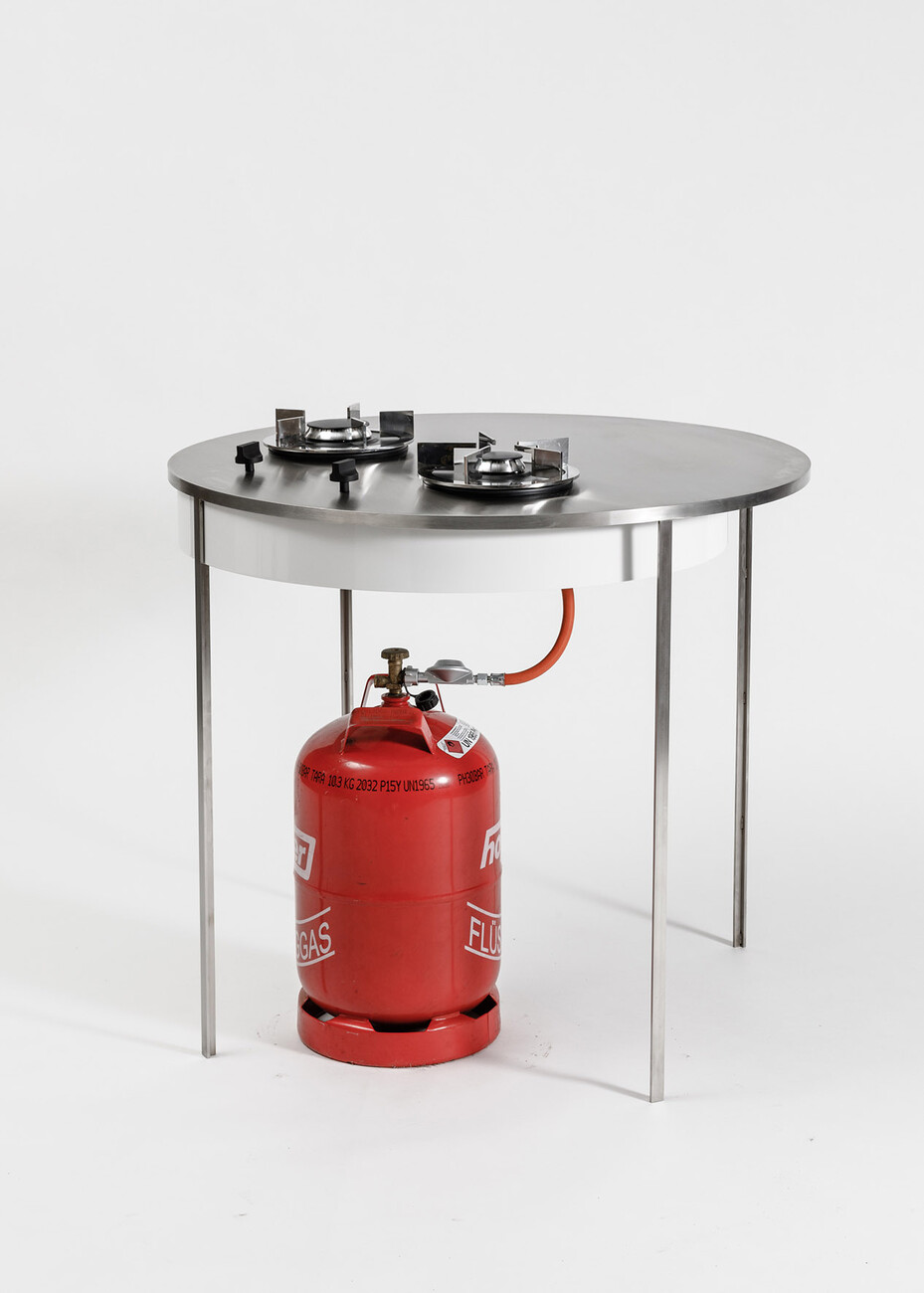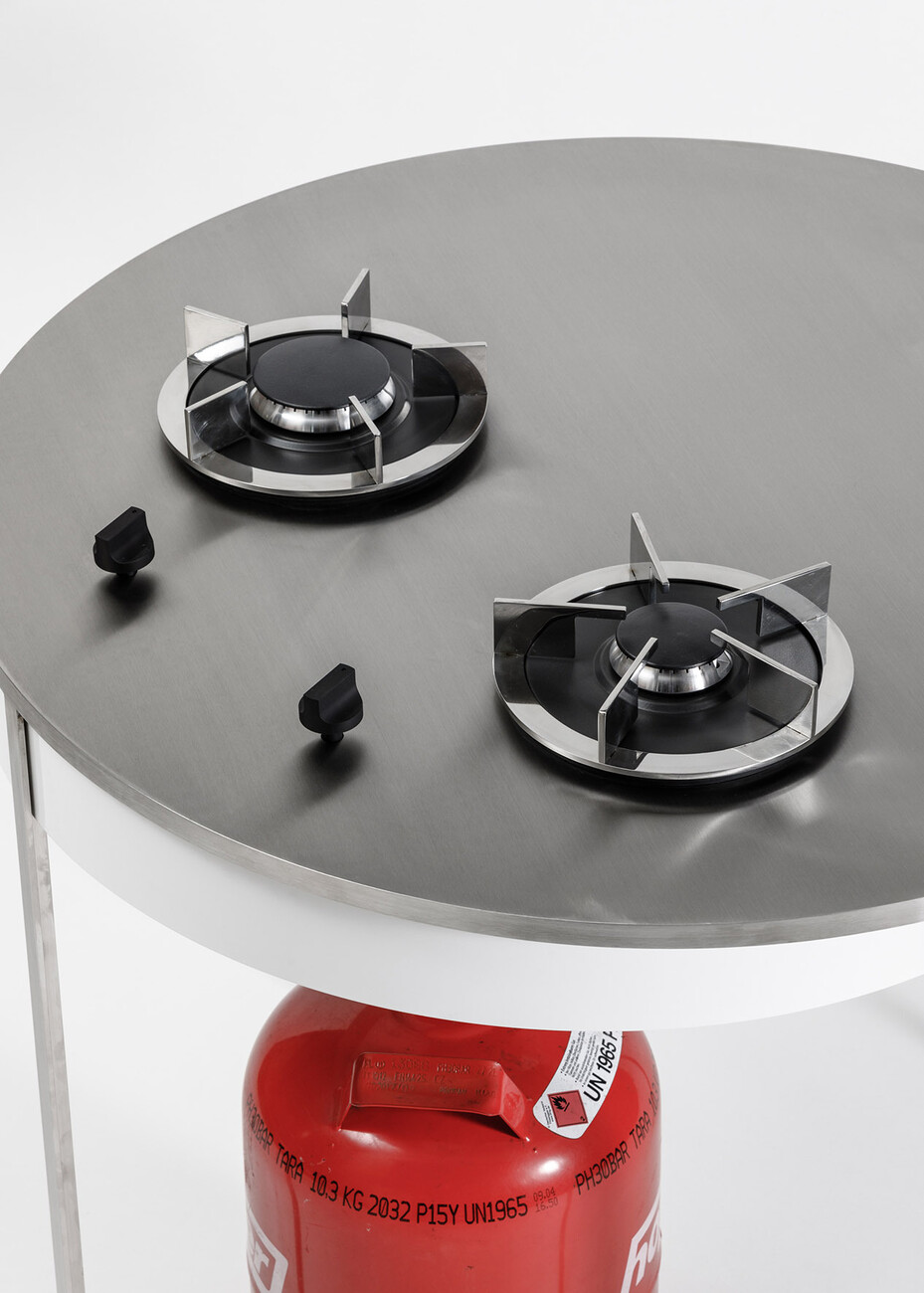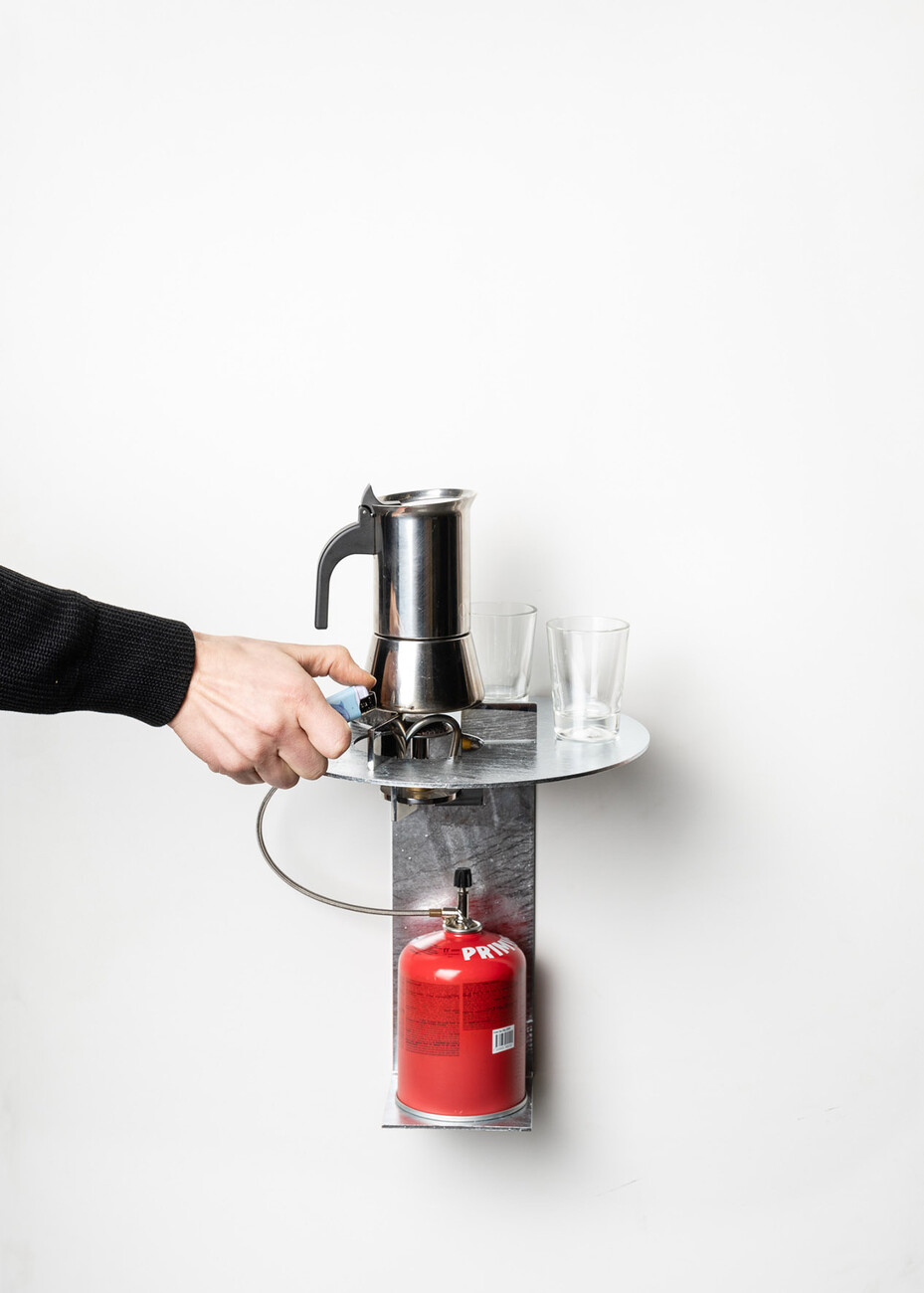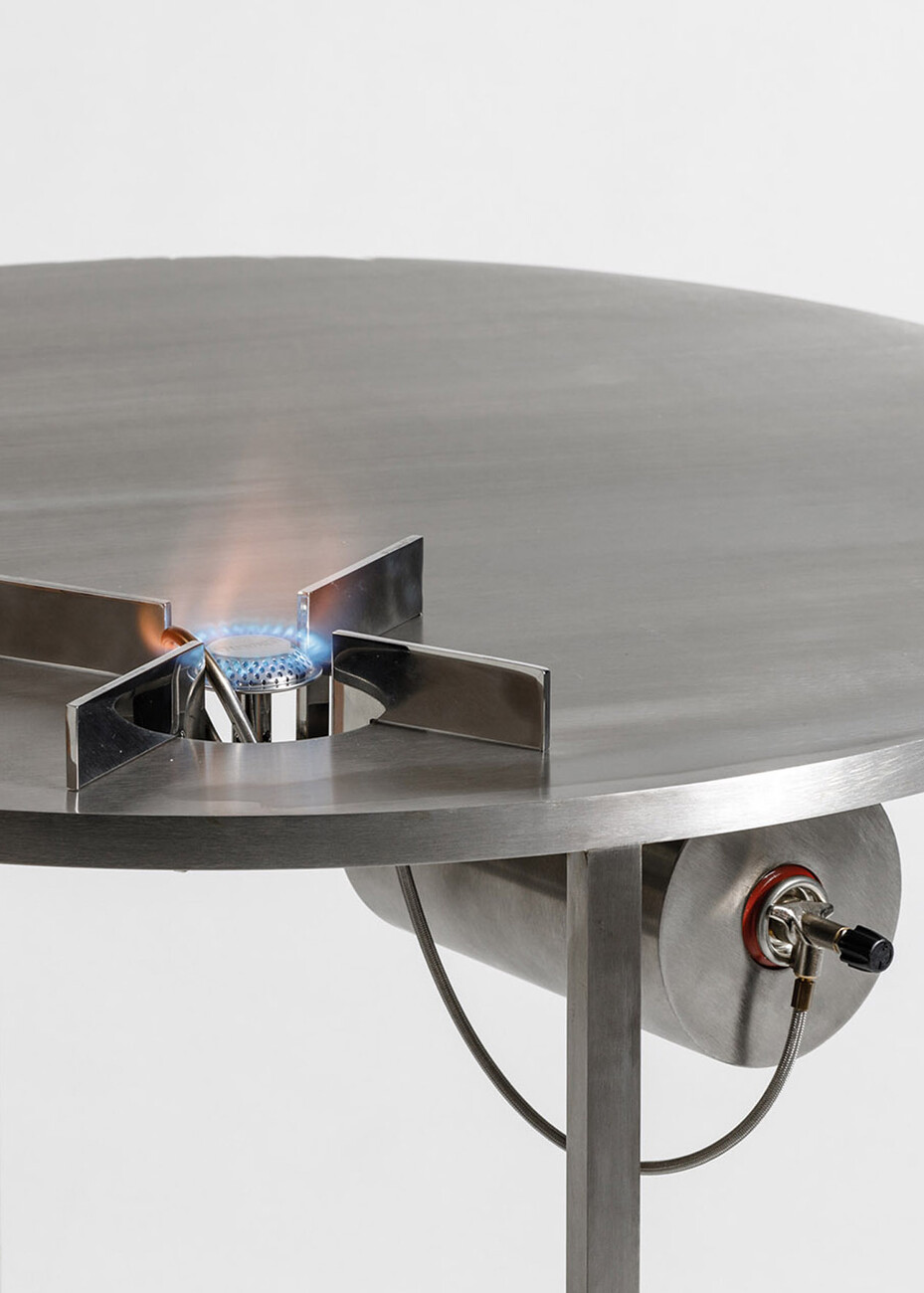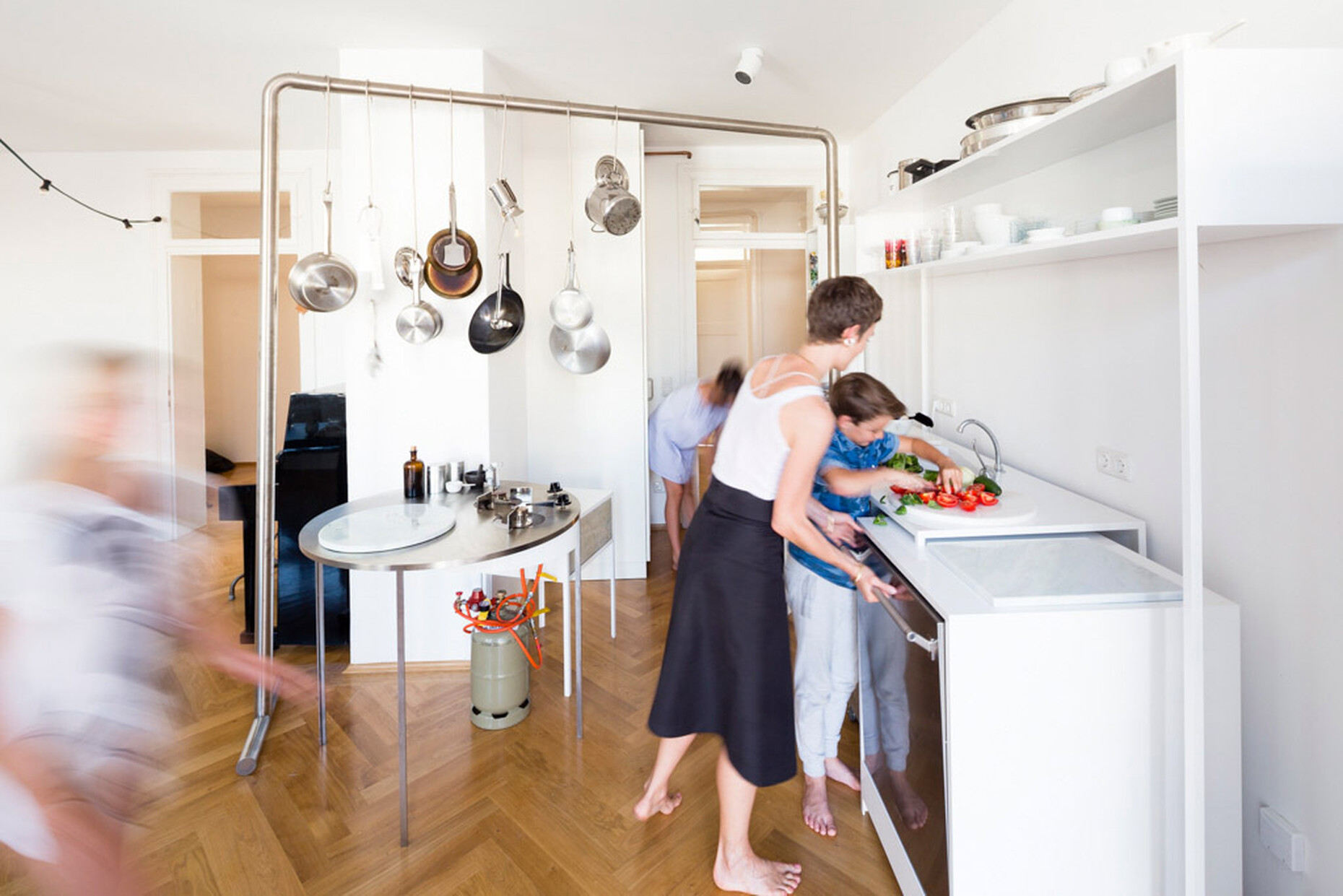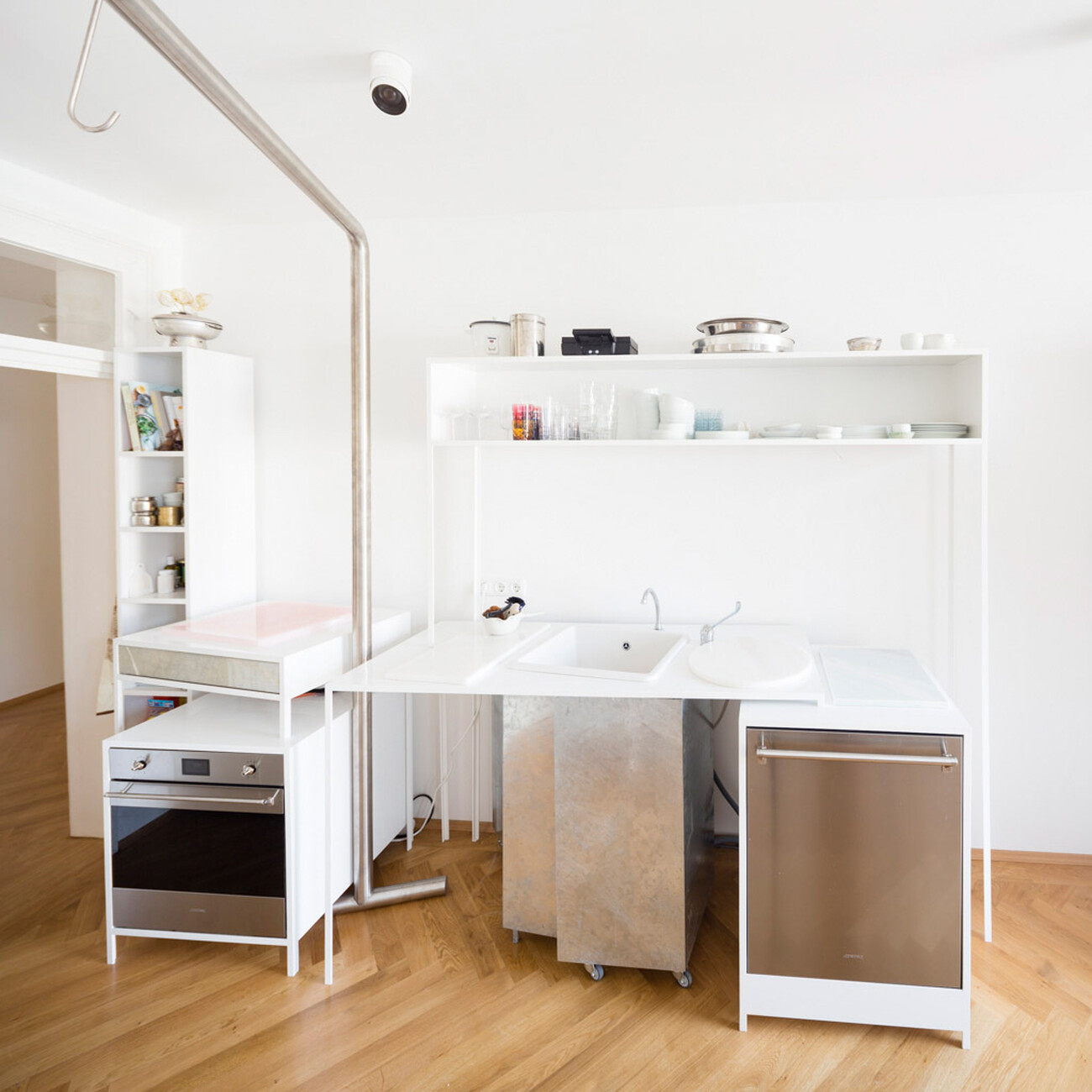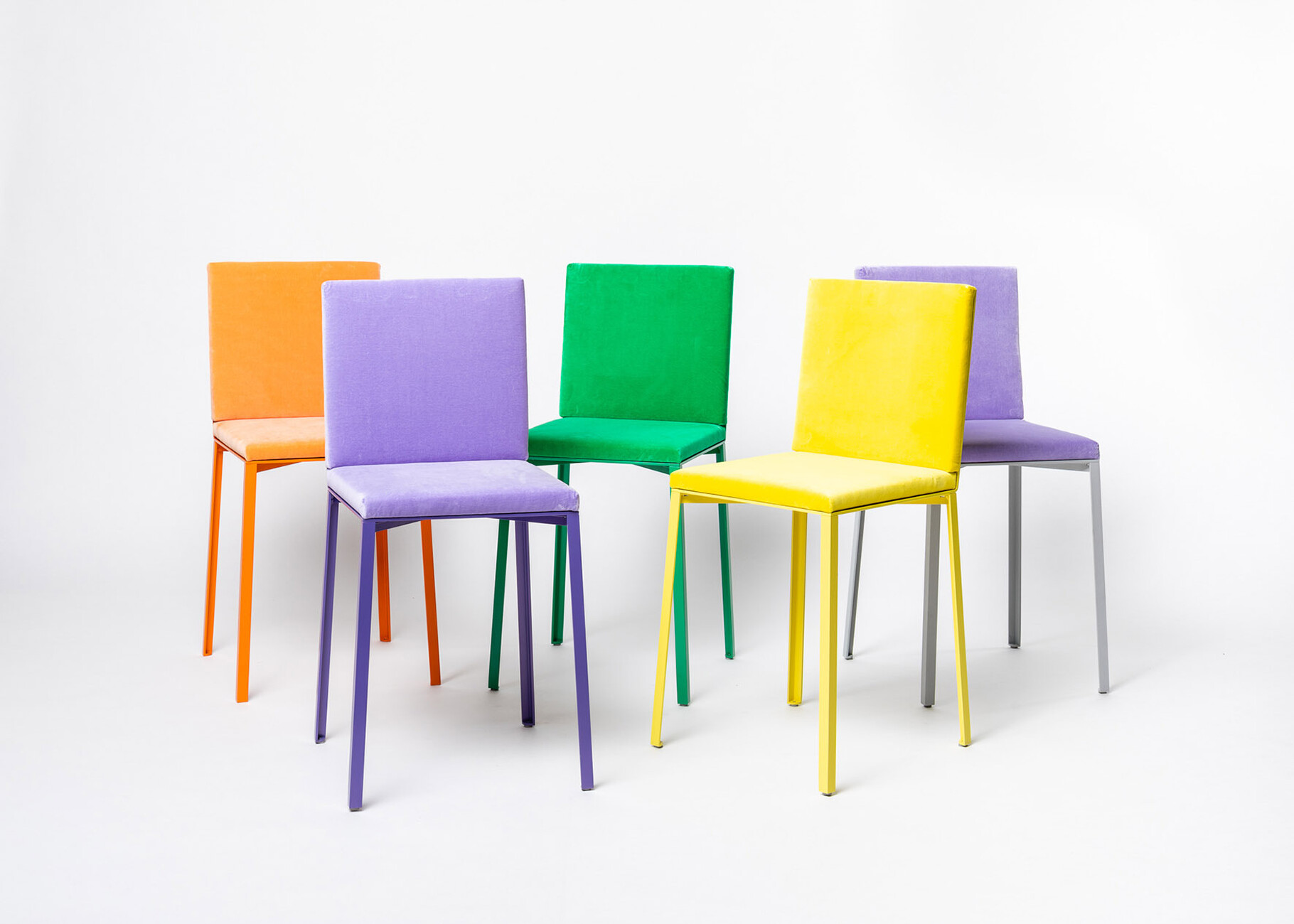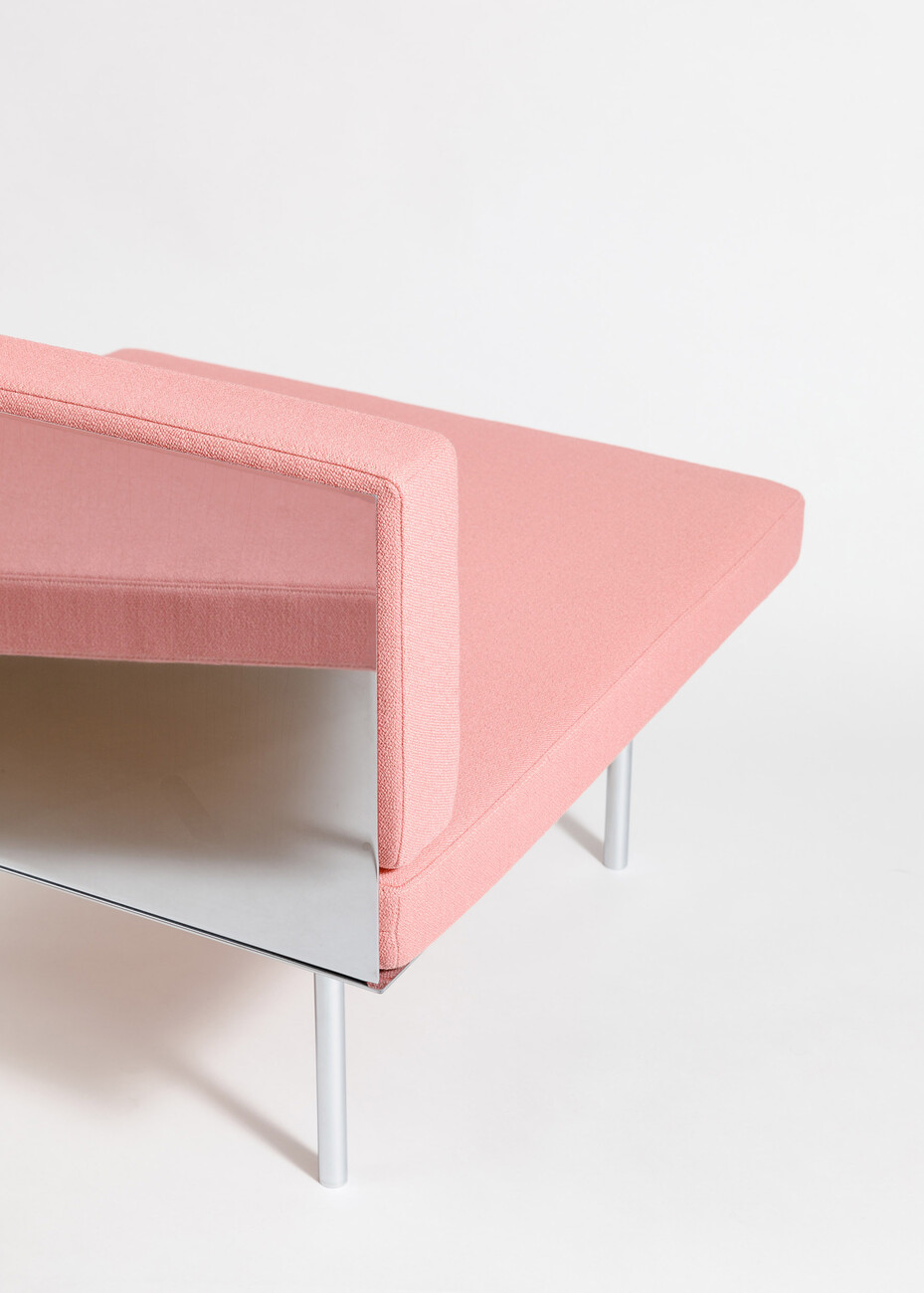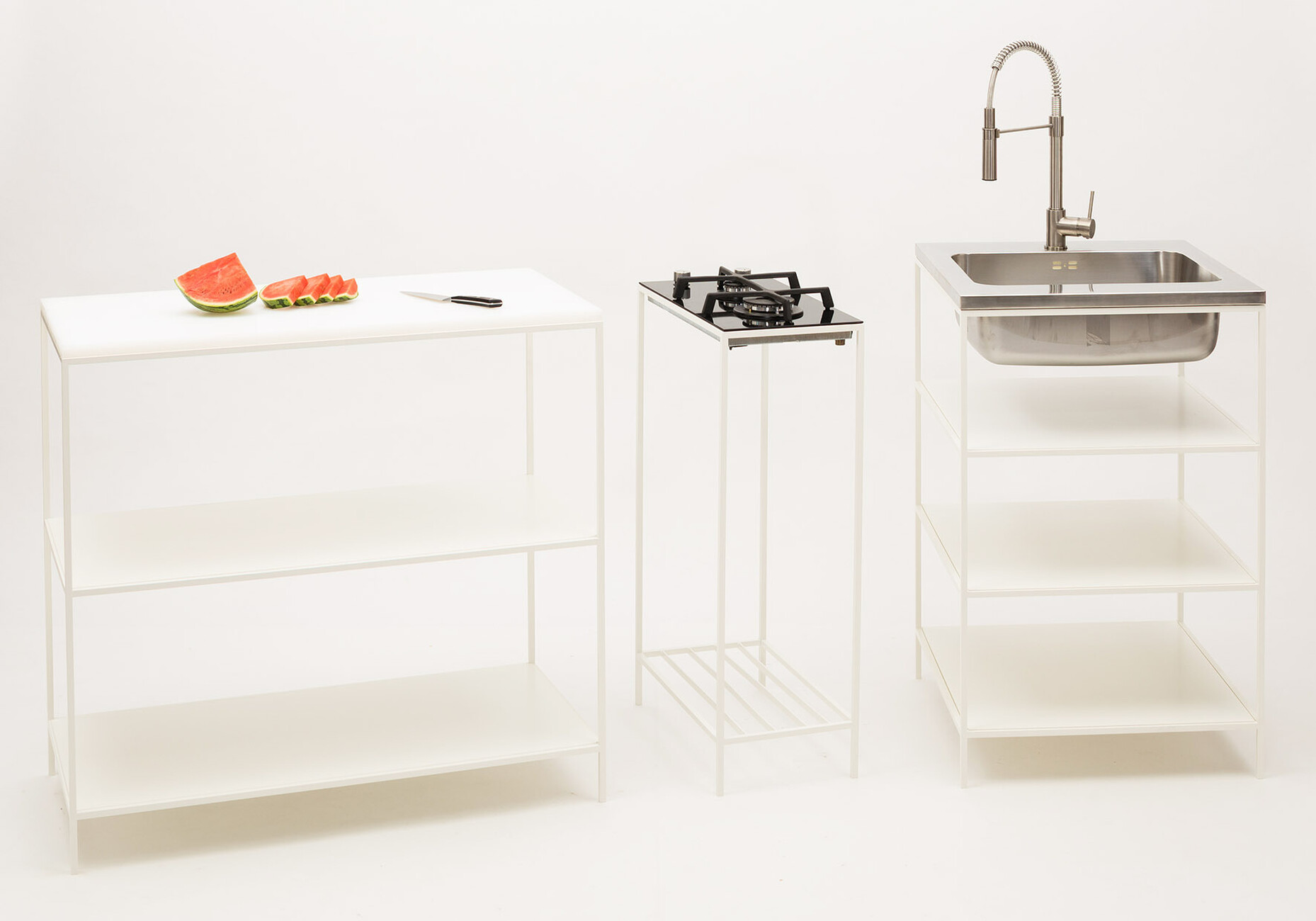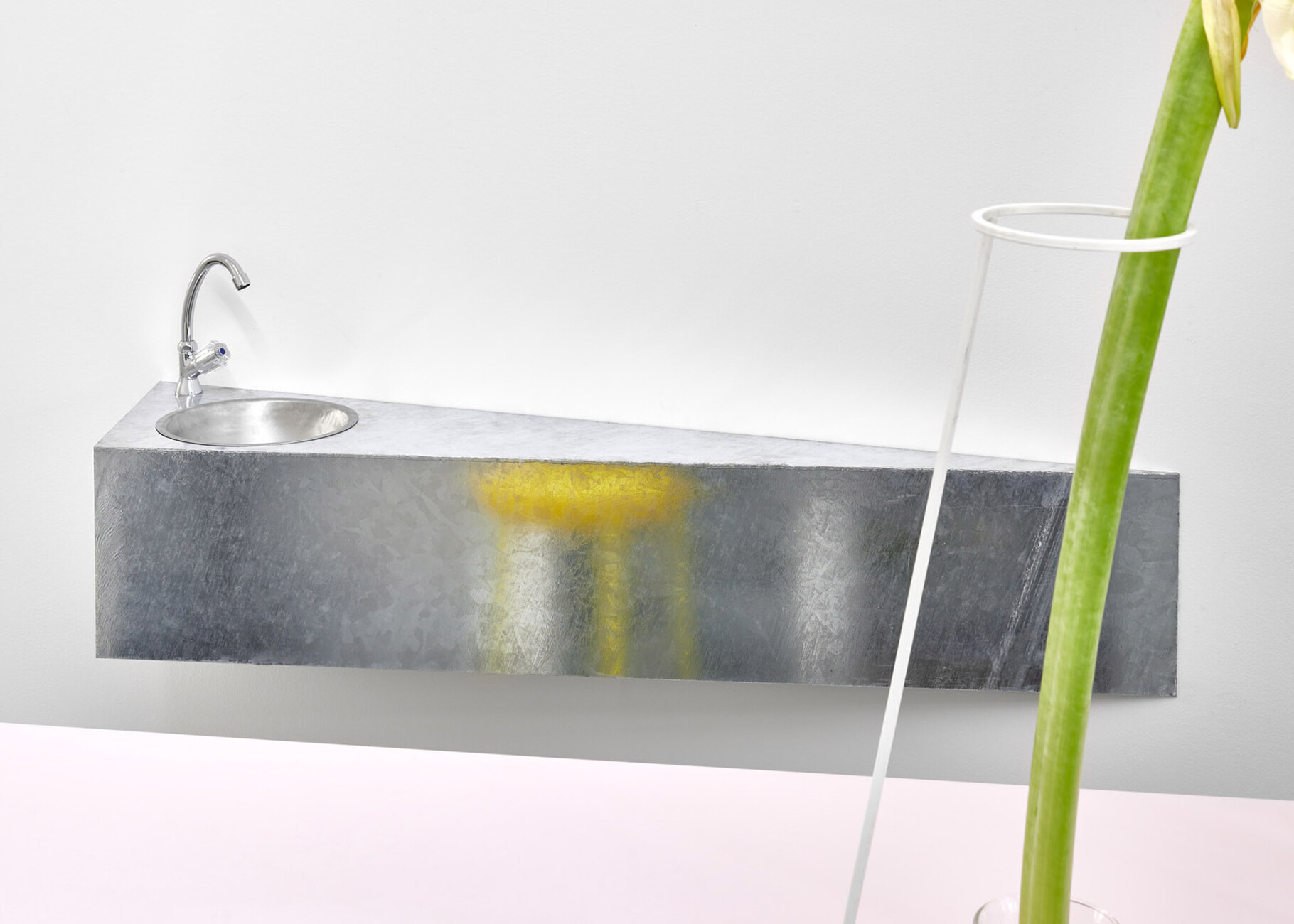PORTRAIT
Tough but Fair
Kreuzberg, an inner courtyard two buildings back from the road, a brick façade, lattice windows, a goods elevator, everything has become somewhat rundown over the course of the decades, in a picturesque sort of way. Berlin-style industrial nostalgia – it could have been made for Instagram. In the midst of this shabby-chic idyll: A table, benches and stools made of thick beams, smooth as silk and gaudy. Simon Ertl puts some cushions on them before we sit down for our Covid-compliant outdoor interview. And it’s not for nothing that the furniture is called “Pretending it’s Wood” – while from a distance it might look like wood, in actual fact it is powder-coated aluminum. Rather a cold place to sit on this chill spring day. And, typically of Ertl und Zull – the products designed and produced by Simon Ertl, Markus Zull and a whole network of staffers and partners under the name of Ertl und Zull are not, in fact, strikingly cozy.
While softly rounded, fluffy, woolly covers and rough carpets made of unbleached jute fibers do the rounds in the social media, what is coming out of this courtyard workshop in Berlin’s Kreuzberg district is furniture and objects of choice artificiality and rigor. Barstools balancing on four spindly legs. Tables with built-in cooking gas burners integrated into shiny metal kitchen modules on castors. Upholstered chairs in loud colors. Staircases with sharp edges made of galvanized sheet metal. “Our designs are all objects in the sense that they form a counterpart to something else,” explains Ertl, one of the two founders of Ertl und Zull. “To stand in somebody’s way, to obstruct someone. They have not just been made to represent an agreeable functionality and to serve us. They are characters in their own right, the kind you develop a real relationship to.” Incidentally, unpleasant encounters between shins and metallic edges have been factored in. And the designer doesn’t have any problems with that – “That just makes for a more intense relationship with the item in question,” he comments, laughing.
As a company, Ertl und Zull has just about as many strings to its bow as the counter-top with the millipede legsthey built for the Julia Stoschek Art Collection to a design by Johanna Meyer-Grohbrügge. In their workshop, they and their five employees build furniture, assembly parts and event installations for companies, agencies and architecture practices. Their client-base also includes galleries and artists who turn to Ertl und Zull to make their installations and sculptures for them. The firm’s core competency is in metalworking, their two-story workshop is managed by Ertl’s founding partner Markus Zull. Along with straightforward contract work, they also have a large number of cooperation agreements with other creative minds – in such cases Ertl und Zull and their team of designers are full-fledged partners in the creative process. They have already concluded cooperation agreements of this kind with Berlin-based architecture practices such as Atelier Fanelsa and Sam Chermayeff Office. Who is then the actual mastermind behind a design and to what extent is something that Ertl can often not quite pin down. “The figure of a solitary artistic genius has anyway had its day.” For him, what he find exciting is to swap ideas with other people and collaborate in a network. Back in 2012, before he had even finished his Bachelor’s degree at Weißensee academy of art Berlin, he started taking on his first jobs. His studio and workshop grew organically out of this. Because the burden of responsibility is spread across by a number of shoulders, it has even been possible for him to continue with his studies, while being, at the same time, a young entrepreneur. In July, Ertl will be finishing his Master’s in Creative Design at FHNW in Basle, the University of Applied Science and Arts of Northwestern Switzerland.
Last but not least, Ertl und Zull also design little series of objects under their own name. “These projects are lurking somewhere at the back of our minds as we work on larger projects,” explains the designer. “And then, when we have more breathing space, we realize them.” Such projects include the outdoor furniture that is cold to sit on, and that is really a recycling project. They had a large number of aluminum profiles left over from a project constructing an exhibition booth, and these reminded the team of wooden beams. This is how the idea for “Pretending it’s Wood” was born. Moreover, new aluminum welding equipment in the workshop made it possible to manufacture the tables, benches and stools cost-effectively in-house. “Machines play a part in the design,” explains Ertl. The team is currently busy making a large number of objects with large round volumes – simply because they now have a new sheet metal profiling machine that can shape the metal into bins at the workshop. However, independent of which tool they use: “I personally aspire to ensure that all the designs are easy to understand. For instance, by making them extremely stylized or by referencing an archetype.” As far as the results are concerned, these are sometimes along the lines of three-dimensional line drawings and sometimes, as with the outdoor furniture, more along the lines of a comic. After all – as Ertl stresses several times during the course of the interview – despite their tough, unforgiving appearances there is one particular thing that their designs are meant to do, namely to amuse us.
